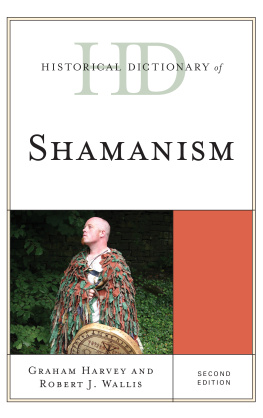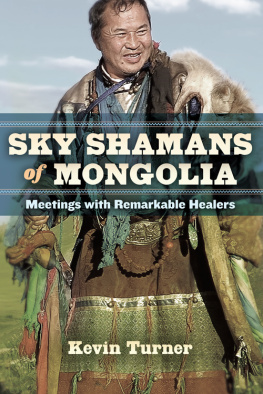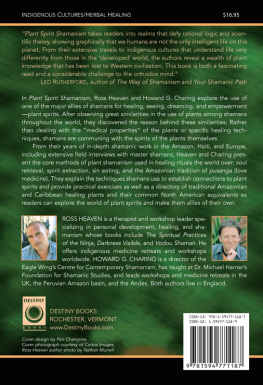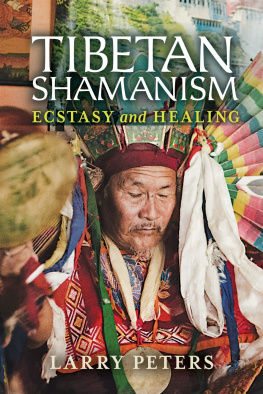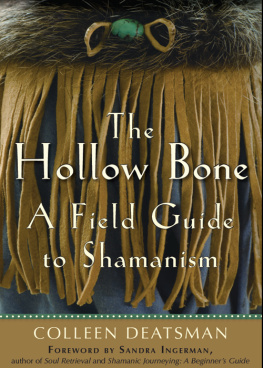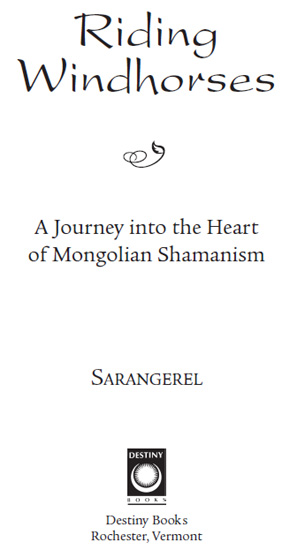
Acknowledgements
I would like to extend my most heartfelt thanks to the many people who have helped me with the learning of the knowledge contained in this book and those who allowed me to use their equipment during its writing.
I would first like to thank the shamans Byambadorj Dondog, Tserendorjiin Sumiyaa, Sanjai Khoborkov, Valentin Khagdaev, and Dawaatseren, who adopted me as his daughter while I was in Mongolia.
Furthermore I would like to thank the people at Inform Polis and Buryaad Unen in Ulan Ude in Siberia, who allowed me to use their computers while I was writing this book, and the Siberian Branch of the Russian Academy of Sciences, who helped me with my research.
Most of all I would like to thank Bayar Dugarov, who has been my friend and companion on my path of learning. Without his inspiration and support this book would not have been possible!
Sarangerel
Preface
The intent of this book is to acquaint the reader with the shamanic world of Siberia, especially from the perspective of the Mongols. In Siberia there are three groups of nationalities and tribes, the Uralic, the Altaic, and the Paleo-Siberian, and each of these groups contains smaller groups. In spite of some linguistic differences there are overarching themes and images that appear among all forms of shamanism in Siberia. This book will focus on the Altaic peoples shamanism, especially that of the Mongols. Indeed, the classic studies of shamanism, including those by Marie Czaplicka, Mircea Eliade, and Michael Harner, have given special attention to the shamanism of Altaic peoples such as the Buryat, Mongols, and Tungus, creating an image of a classic Siberian shamanism. I am, therefore, treading in the same footsteps as some leading authorities on shamanism, yet I hope that I shall be able to add a new perspective on Siberian shamanism.
As I will be using the term Altaic several times during this book I will explain a little about its meaning. As mentioned above, there are three great groups of nationalities in Siberia, of which the Altaic peoples are one. The Altaic derive their name from the fact that most historians believe that these peoples originated in the region between the Altai Mountains in the west and Lake Baikal in the northeast. They share related languages, a mixed pastoral and hunting lifestyle, and share common shamanic traditions. These peoples include the Mongols, Tungus (Evenk), and the various Turkic peoples of Siberia such as the Tuvans, Tatars, Khakass, Yakut, and Altai (not to be confused with Altaic). Since the Altaic peoples share a common ethnic origin from ancient times, their similar shamanic traditions all spring from a common ancient source. The Mongols, whose shamanism belongs to the Altaic tradition, consist of various sub-groups within the greater Mongolian ethnos, including the Halh, Oirat, Buryat, Kalmyk, and Dagur, among others. Much of what is presented in this book comes from Buryat, Oirat, and Dagur Mongol shamanic traditions.

The author (right) and the shamaness Sumiyaa shamanizing in the Bumbat valley.
I myself am of Siberian descent through my mothers family, and I have practiced shamanism for many years. For the past five years I have been in daily contact with Mongols and Buryats in the United States, in Mongolia, and in Siberia. My experiences have allowed me to learn more about Mongolian shamanist beliefs and the customs that stem from the shamanist worldview. In years previous I studied under a Native American (Tsalagi) shamaness, Linda Luke, which gave me the opportunity to compare the ideas that Siberians and Native Americans have in common. I learned that there are striking similarities between the two traditions, a fact that may be attributable either to common ancestry and thus diffusion through migration across the Bering land bridge, or to the possibility of similar environments creating a similar set of beliefs. Exploring all the questions surrounding this phenomenon, however, would require yet another book.
Some readers may be familiar with other sources of information concerning various Mongolian and Siberian ethnic groups and may find that certain features of the Mongolian shamanism I describe here are not completely accurate in all points for all Mongolian or Siberian tribes. This is, of course, the result of the great geographic area and differences in environment and tribal history that have allowed for variation in observances and beliefs. This book is meant to be a synthesis based on personal experience as well as on studies of the Mongols and several Siberian tribes that share common linguistic roots and similar traditions with the Mongols. It is my goal to present a model of Mongolian shamanism based on common themes and images found among most Mongolian communities and among other native Siberian nationalities related to the Mongols such as the Altai, Tuvans, Yakut, and Tungus. Since religion is by nature conservative, even though it may undergo dramatic changes in some of its aspects, it often retains at its core beliefs and images that are extremely ancient.
Many readers may be familiar with the worldview of Native Americans, and how their relationship with nature shaped their beliefs and behavior. This worldview is also found among Mongols and Siberian peoples in general. Reverence for Mother Earth and Father Heaven above, as well as for all the spirits of animals and nature, creates a way of life that expresses respect for natural forces and abstains from harm to them whenever possible.
Mongols believe that the goal of life is to live in a state of tegsh, in balance with the world. One stands alone and in power at the center of the world, with infinite blue Father Heaven above and Mother Earth supporting and nurturing below. By living an upright and respectful life, a human being (hun) will keep his world in balance and maximize his personal power (windhorse, hiimori). Heaven and Earth, the spirits of nature, and the ancestors supply every need and protect all humans. Shamans play an important role in restoring balance when it goes awry because of disaster or spirit interference.
The emphasis on personal power and harmony with the natural world are two elements that distinguish shamanism from other religions. In fact, to classify shamanism as a religion is inaccurate because it does not have a fixed doctrine or formal organization. It is very personalized because of its dependence on individual vision and relationship with the world and higher powers. One Mongol described it by saying, Everyone has his own universe, everyone has his own path.
As we approach the third millennium of our era, we are faced with almost daily reminders of how we need to restore our connection with nature in order to preserve the world for future generations. We, as the human race, can look back at the centuries of misery and bloodshed caused by the conflicts connected with organized religions. While not every person may be inclined to subscribe to shamanist beliefs per se, the themes of retaining balance in the world and discovering religious belief through personal experience are important and applicable to the life path of almost anyone. For that reason, shamanism represents a type of relationship with the world and the spiritual dimension that is not only useful, but perhaps also necessary for the survival of humankind.
I have organized this book in a way that presents the basic concepts of Mongolian-Siberian shamanism in seven chapters. Each chapter concludes with a ritual or two that incorporates the knowledge conveyed in the chapter, thereby mixing the learning with practical methods that will allow one to experience the power and beauty of Mongolian shamanism. These rituals, while true to Mongolian and Siberian custom, have been scaled down somewhat for individual or small group use in Western countries. The truth and the core experience are retained, however, and by the time the reader has completed both the learning and practical sides of this book he or she will be able to follow the Siberian shaman path for enlightenment and personal growth. Therefore, I hope that all reading this book will profit from the knowledge of the shamanism of Siberia and Mongolia presented in the following pages.
Next page


